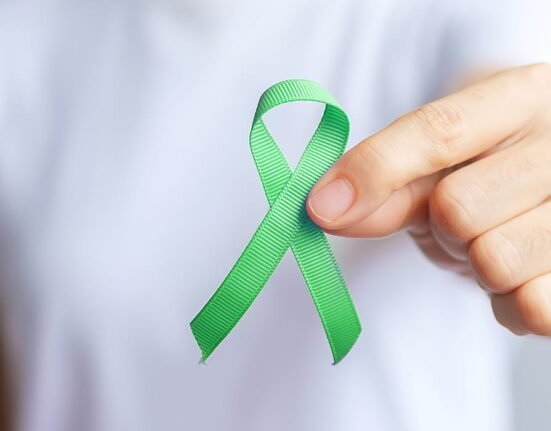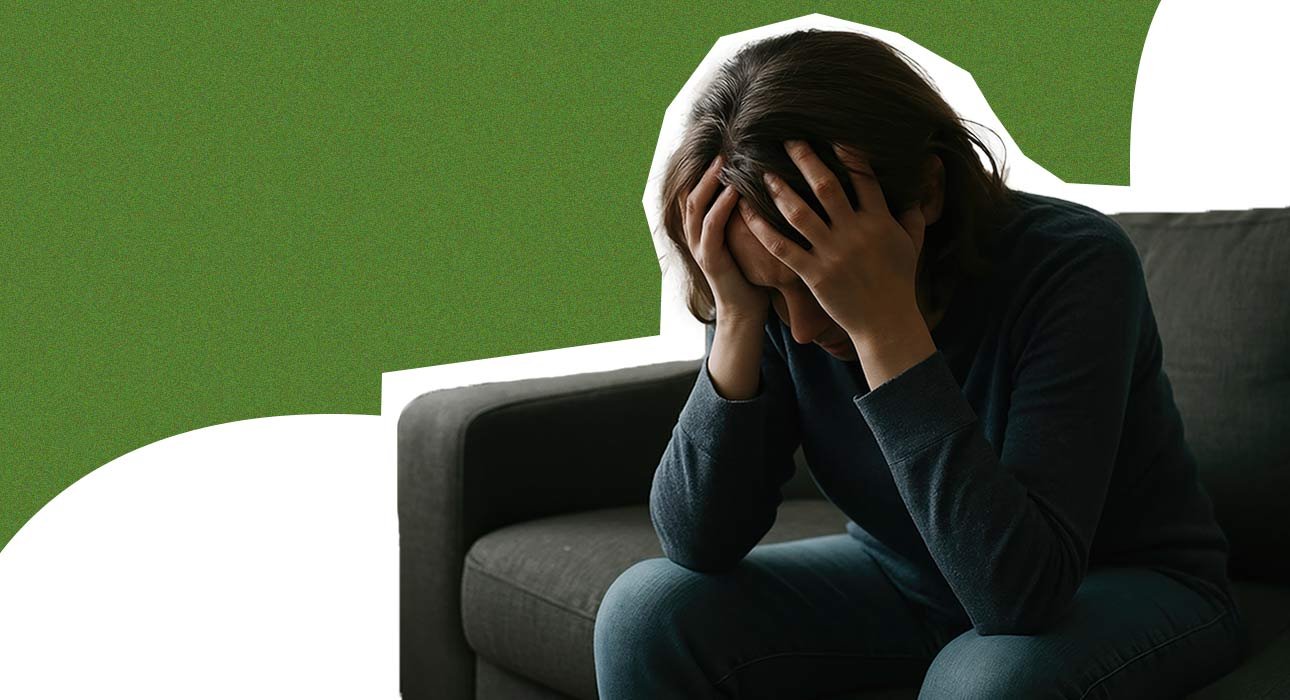Ever wondered how it is determined by your therapist whether your anxiety is ‘normal’ or a disorder?
The first step towards answering such questions is a proper diagnosis. Furthermore, this requires a proper criterion for each disorder, which is standardised and such an answer is held by the Diagnostic and Statistical Manual of Mental Disorders, often known as the “DSM”. It is a standard reference handbook that contains information about mental health and brain-related disorders and conditions (Cleveland Clinic, 2023). It provides in-depth information about each such disorder, including diagnostic criteria, signs and symptoms, aetiology (causes), prevalence, etc (Cleveland Clinic, 2023).
Read More: Comprehensive Insights into Mental Health & Mental Disorders
What is DSM?
The first DSM was published by the APA (American Psychiatric Association) in 1952. Several updated issues with great revisions have been published since then by the APA. The most recent being the DSM-5 TR published in 2022 (Cherry, 2024). Although APA is a US-based organisation, the DSM is widely recognised and used. It is supplemented with the ICD (International Classification of Diseases) statistical code numbers, making the DSM gain popularity among mental health professionals worldwide (Regier et al., 2013).

The recent versions of the DSM provide operationalised criteria for proper and consistent diagnosis (APA, 2013). These standard criteria help clinicians distinguish between various disorders like anxiety and depression, obsessive-compulsive which share symptoms (Clark & Watson, 2002). Anxiety disorders, trauma and stress-related disorders and obsessive compulsive disorders were grouped under Anxiety Disorders till 2013 (Stein et al., 2014).
But with the conceptualisation of DSM-5, trauma and stress-related disorders (like PTSD) and obsessive-compulsive conditions are separated from anxiety disorders (Tadros et al., 2024). The newer version takes into consideration differences based on race and its varied manifestations into account as well (APA, 2022).
The various anxiety disorders included in the DSM-5 TR are: generalised anxiety disorder, separation anxiety disorder, selective mutism, specific phobia, social anxiety disorder, panic disorder, and agoraphobia (APA, 2022). For each of these classifications, proper diagnostic guidelines are provided with duration, onset, prevalence, cultural and gender differences, as well as globally relevant modern-day issues like digital anxiety triggers and pandemic-related anxiety. Furthermore, comorbidities (co-occurring conditions) and differential diagnosis pave the way for a more holistic treatment and intervention.
Read More: 10 FAQs on Obsessive Compulsive Disorder (OCD)
How are anxiety disorders diagnosed?
1. Diagnostic criteria (Symptoms Checklist)
The most important feature of the DSM is that it provides proper diagnostic criteria, which is like a symptom checklist for proper and consistent diagnosis of disorders (Howard, 2025). For example, the criteria for diagnosing agoraphobia require fear of at least two situations and intense active avoidance of such situations due to perceived inability to escape or get help if panic-like symptoms start to occur for at least 6 months (APA, 2022). Although overlapping, social anxiety disorder is diagnosed if fear of social situations persists for at least 6 months due to fear of negative evaluation.
Similarly, such rigorous criteria are present for each such anxiety disorder and prove beneficial for accurate and consistent diagnosis across different settings and even geographies (Howard, 2025). The DSM also takes into account the distress that is being caused by the disorder, i.e., the impact that these symptoms cause in the person’s day-to-day life. Only when clinically significant distress or impairment is found, for example, in jobs, relationships, etc, a diagnosis can be made (APA, 2022).
2. Ruling out other causes
The diagnosis also pertains to the exclusion of other potential causes for the symptoms; this is what we call differential diagnosis. Other medical conditions (like hyperthyroidism) frequently experience psychiatric symptoms, including mood and anxiety disorders (Bunevicius and Prange, 2010). Moreover, substance use (eg, high caffeine) has also been associated with anxiety symptoms (Lara, 2010), and other mental health conditions (like OCD) also show overlapping symptoms (Bhatt, 2024). Even generalised anxiety disorder (GAD) has been found to share symptoms like irritability and worry with major depressive disorder (MDD). Here, the DSM helps in distinguishing between whether the main concern is excessive worry (GAD) or mood disturbances (MDD) (Howard, 2025).
3. Tools Clinician Use
Clinicians rely on proper clinical interviews and standardised assessments based on the DSM criteria to correctly diagnose anxiety disorders.
1. Clinical Interview
A mental health professional conducts an in-depth interview, which includes questions about the person’s symptoms, sleep patterns, and other behaviours (Cleveland Clinic, n.d.). It also includes gathering information about duration, severity and the impact on everyday life. These interviews are designed and conducted so that they align with the DSM criteria, so that the professionals can check whether the necessary criteria are being met or not (Howard, 2025).
Numerous structured clinical interview schedules have been published by authors, one such is The Anxiety and Related Disorders Interview Schedule for DSM-5 (ADIS-5), published in 2014 by Brown and Barlow. Its objective is to diagnose current and past anxiety, mood, obsessive-compulsive, trauma, and related disorders. It also permits differential diagnosis among these disorders according to DSM-5 criteria (Brown & Barlow, 2014).
2. Standardised Assessments
Numerous standardised tools have been used to evaluate symptoms of anxiety disorders in accordance with the DSM. These tools range from self-reported measures and clinician-administered tools. Tools like GAD-7, a 7-item questionnaire used to assess the severity of generalised anxiety disorder (Spitzer et al., 2007) and even Panic Disorder Severity Scale (PDSS), evaluate symptoms related to panic attacks (Brown et al., 1997).
What happens after diagnosis?
After the right diagnosis has been made, the next step is treatment. A treatment plan for such disorders would differ from person to person based on their specific symptom profile, severity and distress (APA, 2022).
DSM emphasised that treatment and interventions should address:
- Symptom clusters (e.g., SSRIs for physiological arousal vs. CBT for cognitive distortions and maladaptive thought patterns) (Bandelow et al., 2017),
- Comorbidities (e.g., treating co-occurring depression) (Katzman et al., 2014),
- Patient preferences (e.g., therapy modality choice) (NICE, 2020).
The gold standard and most researched therapy modality for anxiety disorders is Cognitive Behaviour Therapy (CBT) (Bandelow et al., 2022). CBT focuses on recognition and identification of maladaptive thought patterns that lead to emotional irregularities (Cleveland Clinic, n.d.). One other form of therapy that works wonders for anxiety disorders like phobias is exposure therapy.
The mental health professional tries to create a safe situation for the person to face his/her fears. The person starts to associate new and more realistic beliefs with the fear-inducing stimulus (Cleveland Clinic, n.d.). Thus, a holistic treatment can include various such techniques that are tailored to individual needs.
Limitations
Although professionals do rely on the DSM for diagnosis, it comes with its own shortcomings. DSM has a categorical approach to symptoms, i.e., it is either present or absent. But disorders are more often than not seen in a spectrum, and thus this categorical approach oversimplifies this (Reiger et al., 2013; Howard, 2025).
Moreover, the terms used in the DSM, as “excessive worry” or “clinically significant distress”, are judged by subjective understanding of each clinician, and thus, it can create irregularities and inconsistency in diagnosis (Zinnerman et al., 2017. Furthermore, DSM is largely based on Western culture and fails to fully capture the cultural variations in other parts of the world. Thus, even normal experiences of people sometimes get pathologised (Howard, 2025).
Conclusion
The DSM remains a standard for diagnosing anxiety disorders across the world. It does a tremendous job categorising anxiety disorders for better recognition and identification of symptoms. Although it comes with its limitations, moving forward, integrating DSM with more individualised assessment, culturally sensitive interpretations and real-world functional assessments would improve the accuracy and outcome of treatment. Despite such limitations, the DSM is highly recognised and provides mental health practitioners with substantial information and standardisation for proper care and treatment.
FAQs
1. How does the DSM diagnose anxiety disorders?
The DSM provides specific symptom checklists (e.g., excessive worry, panic attacks) and duration requirements (e.g., ≥6 months for GAD). Clinicians assess whether symptoms cause significant distress or impairment in daily life.
2. Can anxiety disorders be cured, or are they lifelong?
While some people achieve full remission, anxiety disorders are often chronic but manageable. Treatment (therapy, medication, lifestyle changes) can significantly reduce symptoms and improve quality of life.
3. Why might two people with the same diagnosis receive different treatments?
Anxiety disorders vary in symptom severity, causes, and personal needs. Treatment plans are tailored based on individual factors like comorbidities, lifestyle, and response to past therapies.
4. What’s the difference between normal anxiety and an anxiety disorder?
Normal anxiety is temporary and proportional to stress (e.g., nervousness before a test). An anxiety disorder involves excessive, persistent fear that disrupts daily life.
5. Can anxiety disorders be identified in children?
Yes! Disorders like Separation Anxiety Disorder or Selective Mutism are common in kids. Early intervention improves long-term outcomes.
References +
Anxiety disorders. (2025, July 15). Cleveland Clinic. https://my.clevelandclinic.org/health/diseases/9536-anxiety-disorders
Bandelow, B., Michaelis, S., & Wedekind, D. (2017). Treatment of anxiety disorders. Dialogues in Clinical Neuroscience, 19(2), 93–107. https://doi.org/10.31887/dcns.2017.19.2/bbandelow
Bunevicius, R., & Prange, A. J. (2006). Psychiatric manifestations of Graves??? hyperthyroidism. CNS Drugs, 20(11), 897–909. https://doi.org/10.2165/00023210-200620110-00003 DSM. (n.d.). https://www.psychiatry.org/psychiatrists/practice/dsm
EPROVIDE – MAPI Research Trust. (n.d.-a). ePROVIDE – Mapi Research Trust. https://eprovide.mapi-trust.org/instruments/anxiety-and-related-disorders-interview-sched ule-for-dsm-5-adult-version
EPROVIDE – MAPI Research Trust. (n.d.-b). ePROVIDE – Mapi Research Trust. https://eprovide.mapi-trust.org/instruments/anxiety-and-related-disorders-interview-sched ule-for-dsm-5-adult-version
First, M. B., Yousif, L. H., Clarke, D. E., Wang, P. S., Gogtay, N., & Appelbaum, P. S. (2022). DSM‐5‐TR: overview of what’s new and what’s changed. World Psychiatry, 21(2), 218–219. https://doi.org/10.1002/wps.20989
Hopwood, M. (2023). Anxiety Symptoms in Patients with Major Depressive Disorder: Commentary on Prevalence and Clinical Implications. Neurology and Therapy, 12(S1), 5–12. https://doi.org/10.1007/s40120-023-00469-6
Howard, A. (2025, April 2). How is the DSM used to diagnose anxiety? Healthline. https://www.healthline.com/health/anxiety/how-is-dsm-used-to-diagnose-anxiety#clinical -application
Katzman, M. A., Bleau, P., Blier, P., Chokka, P., Kjernisted, K., & Van Ameringen, M. (2014). Canadian clinical practice guidelines for the management of anxiety, posttraumatic stress and obsessive-compulsive disorders. BMC Psychiatry, 14(Suppl 1), S1. https://doi.org/10.1186/1471-244x-14-s1-s1
Kessler, R. C., Aguilar-Gaxiola, S., Alonso, J., Benjet, C., Bromet, E. J., Cardoso, G., Degenhardt, L., De Girolamo, G., Dinolova, R. V., Ferry, F., Florescu, S., Gureje, O., Haro, J. M., Huang, Y., Karam, E. G., Kawakami, N., Lee, S., Lepine, J., Levinson, D., . . . Koenen, K. C. (2017). Trauma and PTSD in the WHO World Mental Health Surveys. European Journal of Psychotraumatology, 8(sup5). https://doi.org/10.1080/20008198.2017.1353383
Lara, D. R. (2010). Caffeine, mental health, and psychiatric disorders. Journal of Alzheimer S Disease, 20(s1), S239–S248. https://doi.org/10.3233/jad-2010-1378
MSEd, K. C. (2024, May 13). Diagnostic and Statistical Manual of Mental Disorders (DSM) overview. Verywell Mind.https://www.verywellmind.com/the-diagnostic-and-statistical-manual-dsm-2795758 NICE.
(2011, January 26). Overview | Generalised anxiety disorder and panic disorder in adults: management | Guidance | NICE. https://www.nice.org.uk/guidance/cg113 Panic Disorder Severity Scale (PDSS). (2025, June 16).
https://my.clevelandclinic.org/health/articles/24291-diagnostic-and-statistical-manual-ds m-5
Regier, D. A., Kuhl, E. A., & Kupfer, D. J. (2013). The DSM‐5: Classification and criteria changes. World Psychiatry, 12(2), 92–98. https://doi.org/10.1002/wps.20050
Regier, D. A., Narrow, W. E., Clarke, D. E., Kraemer, H. C., Kuramoto, S. J., Kuhl, E. A., & Kupfer, D. J. (2013). DSM-5 Field trials in the United States and Canada, Part II: Test-Retest Reliability of selected categorical diagnoses. American Journal of Psychiatry, 170(1), 59–70. https://doi.org/10.1176/appi.ajp.2012.12070999
Stein, D. J., Craske, M. A., Friedman, M. J., & Phillips, K. A. (2014). Anxiety Disorders, Obsessive-Compulsive and Related Disorders, Trauma- and Stressor-Related Disorders, and Dissociative Disorders in DSM-5. American Journal of Psychiatry, 171(6), 611–613. https://doi.org/10.1176/appi.ajp.2014.14010003
Tadros, E., Keerthana, S., Padder, S., Totlani, J., Hirsch, D., Kaidbay, D. N., Contreras, L., Naqvi, A., Miles, S., Mercado, K., Meyer, A., Renteria, S., Pechnick, R. N., Danovitch, I., & IsHak, W. W. (2025). Anxiety disorders, PTSD and OCD: systematic review of approved psychiatric medications (2008–2024) and pipeline phase III medications. Drugs in Context, 14, 1–24. https://doi.org/10.7573/dic.2024-11-2
The differential diagnosis of anxiety. Psychiatric and medical disorders. (1985a, March 1). PubMed. https://pubmed.ncbi.nlm.nih.gov/3887337/
The differential diagnosis of anxiety. Psychiatric and medical disorders. (1985b, March 1). PubMed. https://pubmed.ncbi.nlm.nih.gov/3887337/
Watson, D., Weber, K., Assenheimer, J. S., Clark, L. A., Strauss, M. E., & McCormick, R. A. (1995). Testing a tripartite model: I. Evaluating the convergent and discriminant validity of anxiety and depression symptom scales. Journal of Abnormal Psychology, 104(1), 3–14. https://doi.org/10.1037/0021-843x.104.1.3
Zimmerman, M., Clark, H., McGonigal, P., Harris, L., Holst, C. G., & Martin, J. (2017). Reliability and validity of the DSM-5 Anxious Distress Specifier Interview. Comprehensive Psychiatry, 76, 11–17. https://doi.org/10.1016/j.comppsych.2017.02.010













Leave feedback about this